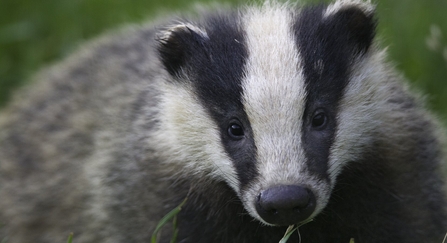Badger vaccination programme
Badgers need your help
We are asking for your support to vaccinate badgers against bovine tuberculosis this autumn.
Scientific evidence has proved the culling of badgers is ineffective in fighting bovine TB among cattle, yet badgers continue to be slaughtered.
What we're doing
We began vaccinating badgers on a number of nature reserves in 2013. A global vaccine shortage paused our efforts for two years, but we resumed in 2018 and have continued every autumn since.
That year, we launched an appeal to raise £25,000 to fund five years of vaccinations and raised £18,000. This generosity has supported staff training, vaccine supplies, and vital equipment.
But this work must continue. To keep the programme running, we need to pay for more vaccines and essential veterinary supplies. All contribution helps protect these special mammals.
Why vaccination is more effective than culling
Staffordshire Wildlife Trust is highly conscious of the hardship that bTB causes in the farming community and the need to find the right mechanisms to control the disease. However, we don't believe that a badger cull is the answer.
Scientific research carried out by the Government has shown that unless badger culling is carried out in line with strict criteria, including the requirement to be across very large areas, it could be counterproductive.
Furthermore, independent research has shown that culling could actually cause the disease to spread more widely, as territorial boundaries will be disturbed which leads to increased movement of badgers.
The Trust believes that vaccination of badgers against bovine tuberculosis (bTB) is currently the most effective way of reducing the risk of badger to cattle transmission, and it should be at the centre of efforts to tackle this disease rather than a cull.

European badger (Meles meles) cub staring, Summer, Dorset, United Kingdom - Bertie Gregory/2020VISION
Please give as much as you can afford
£10 - buys enough peanuts to bait one trap for two weeks
£20 - buys a dose of the vaccine and a syringe
£50 - buys personal protective equipment to keep a vaccinator working effectively and safely
£100 - buys one badger cage trap
£350 - buys an annual FERA certificate of competence for one vaccinator - a legal requirement for the work
£750 - buys professional training for a staff member to safely handle and capture badgers and deliver the programme
Donate to our badger appeal

Image: Andrew Parkinson 2020Vision
How do we vaccinate badgers?
During the vaccination process, wild badgers are captured overnight in ‘live' traps. They are treated with the vaccine the following morning and then released. Vaccinated badgers will be humanely marked, with the traps reset and the process repeated for unmarked badgers. The same areas will be revisited annually for five years, to ensure the majority of the local population is vaccinated.
To find out more about how we vaccinate badgers, see our special feature in Staffordshire Wildlife Trust's members magazine.
How does the Staffordshire Wildlife Trust believe bTB should be tackled long-term?
- Cattle vaccination: The development and deployment of a cattle vaccine is the long-term solution to bTB.
- Badger vaccination: We want to see a badger vaccination strategy put in place by the Government. Until the cattle vaccination is available, the use of a BadgerBCG vaccine is currently the most effective way of tackling badger to cattle transmission.
- Improved testing of cattle: While also limiting the movement of cattle across the country.
- Biosecurity: All possible measures should be pursued to prevent disease transmission on-farm.
Other ways to donate
- By phone - call 01889 880100
- By post - send a cheque payable to Staffordshire Wildlife Trust to FREEPOST NAT 4847, Stafford, ST17 0BR.
